Measurement bias
What If: Chapter 9
Elena Dudukina
2021-03-03
1 / 16
9.1 Measurement bias
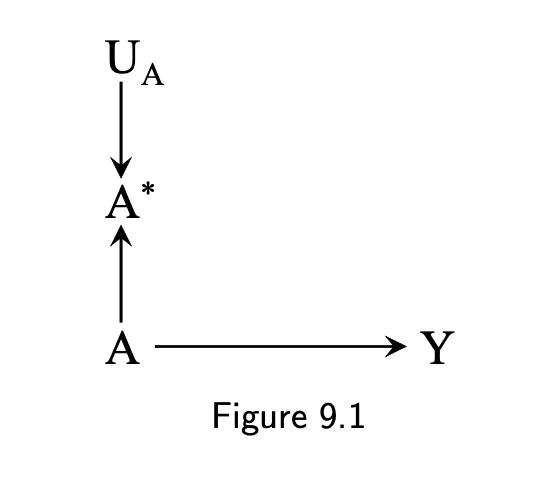
- Independent errors
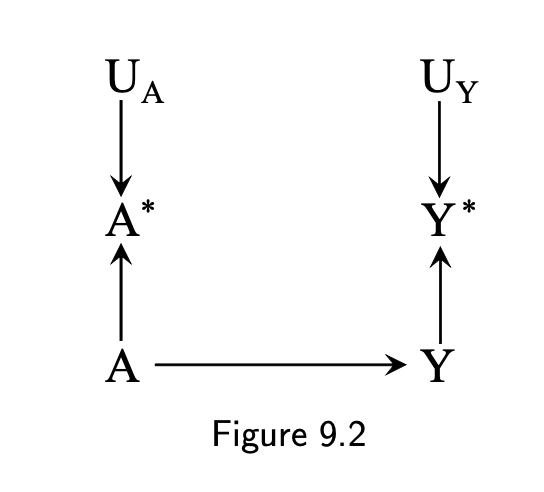
2 / 16
9.2 The structure of measurement error: dependent misclassification
- No single structure (unlike for confounding or selection bias)
- Independence and nondifferentiality
- Dependent errors
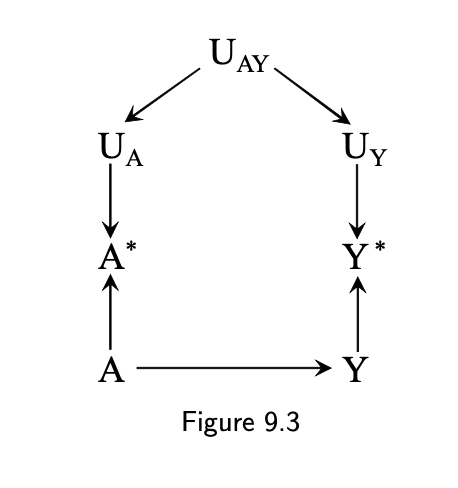
3 / 16
9.2 The structure of measurement error: differential misclassification
- Differential misclassification
- Outcome ➵ how exposure was measured (recall bias)
- Exposure ➵ how outcome is measured (detection bias)
- Independent errors
- Differential misclassification
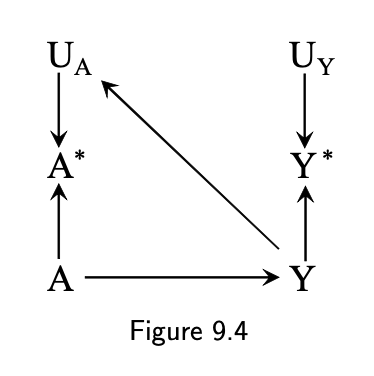
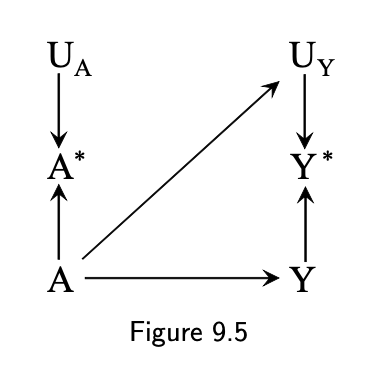
4 / 16
9.2 The structure of measurement error: dependent & differential misclassification
- Dependent
- Outcome ➵ how exposure was measured (recall bias)
- Exposure ➵ how outcome is measured (detection bias)
- Independent errors
- Differential misclassification
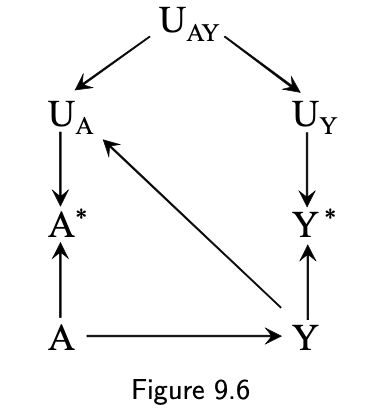
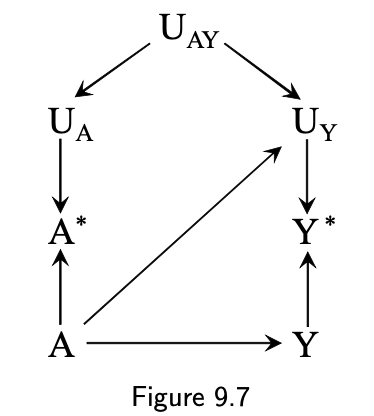
5 / 16
Fine point 9.1
- Measurement error will result in bias
- Except if A and Y are unassociated and the measurement error is independent and nondifferential
- "The magnitude of the measurement bias depends on the magnitude of the measurement error"
- "Causal diagrams do not encode quantitative information, and therefore they cannot be used to describe the magnitude of the bias"
6 / 16
9.3 Mismeasured confounders
- A: drug use
- Y: liver disease
- L: hepatitis history via questionnaire
- the backdoor A ⬅️ L ➡️ Y cannot be blocked by conditionning on L*
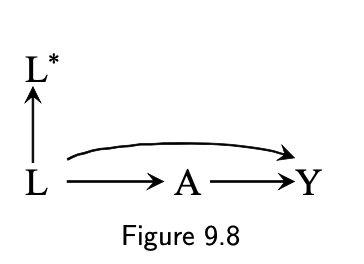
7 / 16
9.3 Mismeasured confounders
- A: drug use
- Y: liver disease
- L: hepatitis history via questionnaire
- the backdoor A ⬅️ L ⬅️U ➡️Y cannot be blocked by conditionning on L*
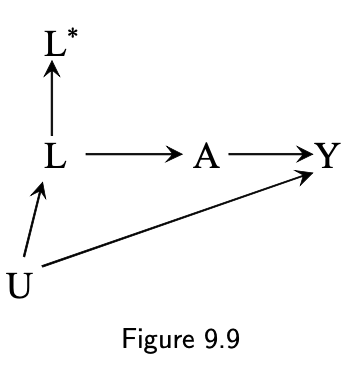
8 / 16
9.3 Mismeasured confounders
- Mismeasurement of confounders may also lead to appearance of effect modification (EMM)
- If L=0 and L=1 strata differently report L∗, stratification by L∗ would produce appearance of EMM
9 / 16
9.3 Conditioning on mismeasured collider
- Selection bias
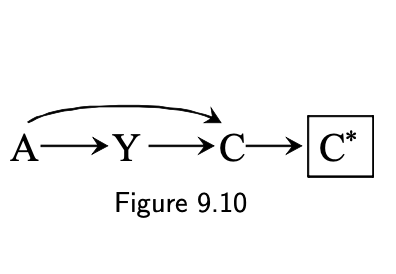
10 / 16
9.4 Intention-to-treat effect: the effect of a misclassified treatment
- Z: randomization
- A: treatment
- Y: outcome
- U: unmeasured
- Z ➡️ Y arrow is present when there is unblinding or allocation concealment failure
- exclusion restriction (assumption: no arrow from Z to Y)
- Effect of Z is intention-to-treat effect (ITT)
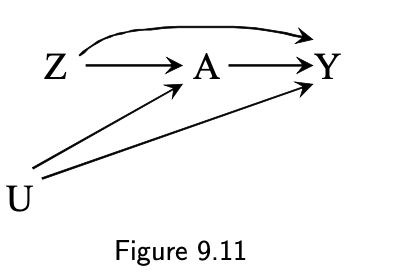
11 / 16
9.5 Per-protocol effect
- Causal effect of the treatment itself and not of randomization to treatment level
- Lack of exchangeability between A=1 and A=0
- Back to observational epidemiology realm
12 / 16
Fine point 9.2
As-treated vs per protocol
As-treated
- Y=1 in those A=1 vs Y=1 in those A=0 regardless of Z
- Confounded (9.11 & 9.12)
- Feasible and estimable given L (9.13)
Per protocol
- Only those who have adhered to the study protocol (A=Z)
- Y=1 in those Z=1 vs Y=1 in those Z=0
- ITT in per-protocol population
- Selection bias
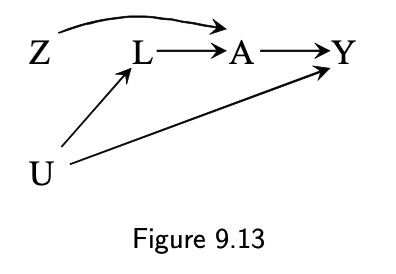

13 / 16
ITT
ITT is a lower bound for per-protocol effect
- ITT is closer to null (conservative)
- Not in safety studies
- ITT is null if there is no effect
- ITT assumes monotonicity (same direction of the effect in all individuals)
14 / 16
Per protocol
- Time-varying
- Report both ITT and per-protocol effects
- trade-off between bias due to potential unmeasured confounding vs misclassification of exposure
- IV approach
- Adjustment approach
15 / 16
References
Hernán MA, Robins JM (2020). Causal Inference: What If. Boca Raton: Chapman & Hall/CRC (v. 31jan21)
16 / 16